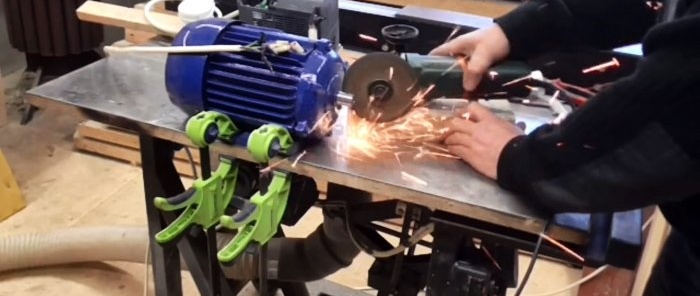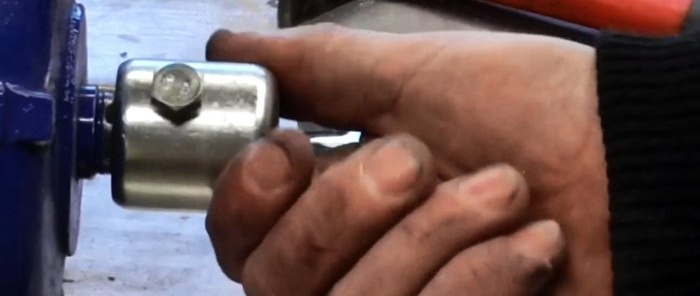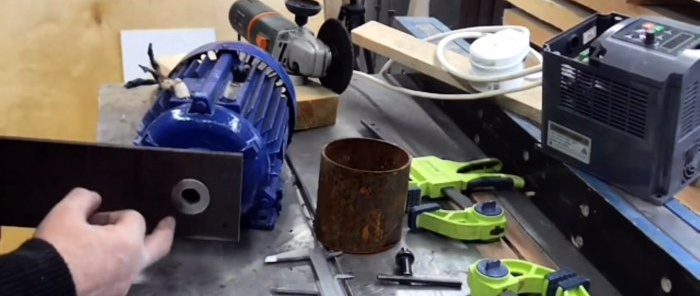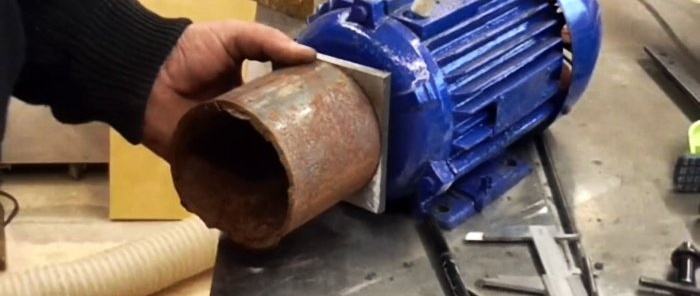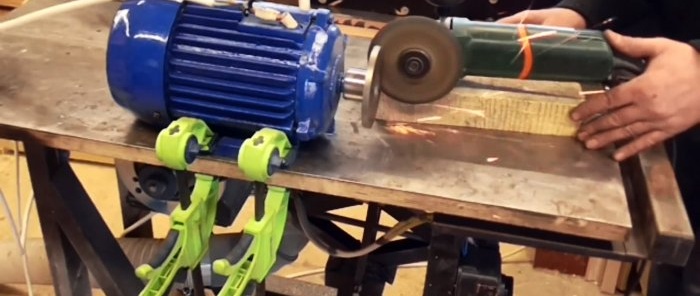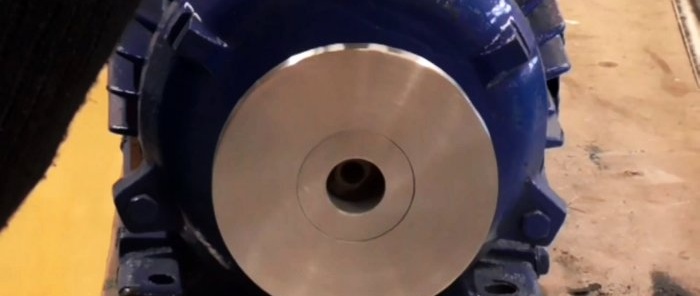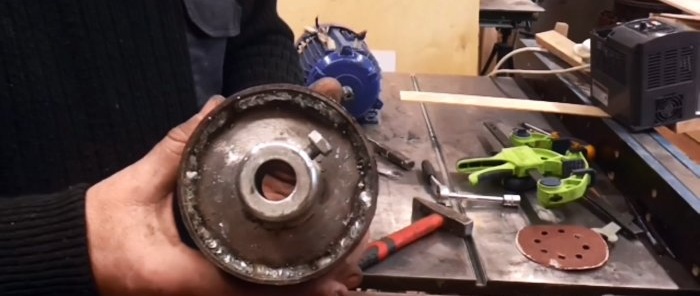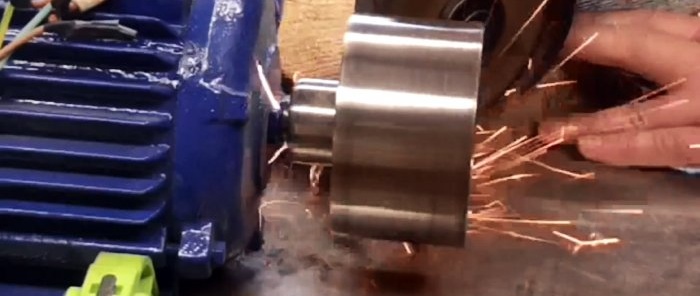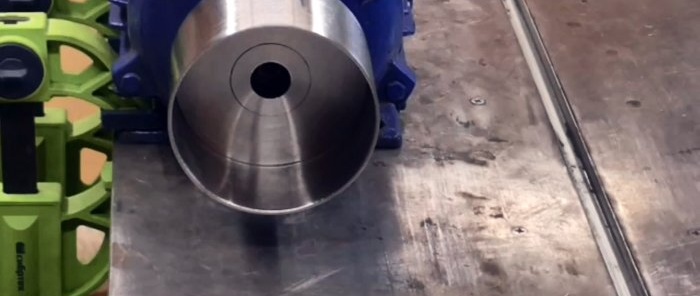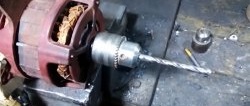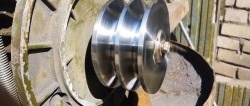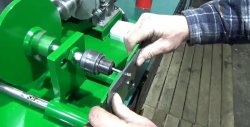Not everyone can afford to have a metal lathe in their home workshop. But if there is a need for a pulley on an electric motor shaft or for other purposes, it can be made without a lathe, using only universal hand tools and having some skills in working with them.
Will need
Materials:- electric motor with a shaft diameter of 22 mm;
- steel strip 8×100 mm;
- metal sleeve with an internal diameter of 20 mm;
- retaining bolt;
- a piece of round steel pipe with an internal diameter of 96 mm.
Welding electrodes for general purposes on AliExpress at a discount - http://alii.pub/606j2h
The process of making a pulley for an electric motor shaft
Since the inner diameter of the sleeve is 2 mm smaller than the diameter of the shaft, it needs to be machined. To do this, we use a grinder, firmly and rigidly attached to a solid wooden board with a bolt.
We turn on the electric motor and the grinder, while the motor shaft and the tool disk should rotate towards each other. Lightly pressing the disk against the shaft, we use the grinder to make reciprocating movements along the shaft. As a result, metal removal will occur, i.e., turning of the shaft. We perform sanding with sandpaper.
We drill a transverse hole in the bushing, cut the thread using a drill and tap, and screw the locking bolt all the way into the shaft.
Since the end of the sleeve is rounded, we trim it with the same grinder and sand it with sandpaper attached to a flat holder.
In a strip of 8x100 mm, use a core drill to make a hole with a diameter of 40 mm and, symmetrically to the hole, cut a square of 100x100 mm from the strip.
We move the square with the hole along the sleeve until its outer plane coincides with the outer end of the sleeve and weld it there using welding.
We turn on the electric motor and use a grinder to clean the circular welding seam.
We draw a circle with a diameter of 96 mm on the square and use a grinder to roughly form a circle from the square.
We adjust the diameter and shape of the circle using the same grinder according to the same method as before grinding the sleeve. The presence of slight runout is explained by the non-rigid fastening of the tool.
We press a piece of pipe onto the flange and align it, minimizing runout.
We remove the pulley from the shaft, weld the pipe to the flange and cut off the excess part along the length.
We re-attach the pulley to the shaft, turn on the electric motor, trim the end planes and grind the cylindrical surface.
The pulley is completely ready for use.


